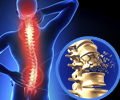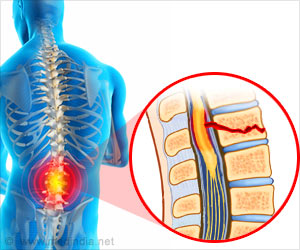Researchers transplanted V2a interneurons obtained from human stem cells into the spinal cords of mice to explore their possible use in spinal cord injury patients.
- Stem cells have been used to generate nerve cells that can be transplanted into the spinal cord of patients with spinal cord injuries
- Researchers grew special types of neurons called V2a interneurons from human stem cells in the laboratory and transplanted them into the spinal cords of healthy mice
- Further studies could see the use of these interneurons in humans with spinal cord injuries
The spinal cord is an extremely delicate nervous tissue structure that is protected by the vertebral column. Injuries to the spinal cord severely disable the patient, who is often left paralyzed and totally dependent on caregivers. This could be the consequence of road traffic accidents, falls, violence and sports injuries. Appropriate emergency treatment can reduce the damage and the long term effects of the injury.
Though the existing nerve cells can branch out and restore some function following injury to the nervous tissue, new nerve cells or neurons cannot be formed during one’s lifetime, thus making the chances of complete recovery bleak. Researchers have tried to address this problem by using cells called stem cells. Stem cells are cells that can develop into different types of cells when exposed to specific conditions. Thus, nerve cells can be produced from stem cells to replace damaged nerves. However, in most of the research currently done, it is not possible to reliably produce a particular type of neuronal cells.
Researchers developed special types of neurons called V2a interneurons from human stem cells using special conditions in the laboratory. These neurons transmit signals between the brain and the spinal cord to control movements of the limbs as well as to control breathing. Therefore, if further studies are successful, these neurons could be used to restore movements in patients with paralysis due to damage to the spinal cord as well as other neurological conditions that affect the spinal cord like amyloid lateral sclerosis.
The researchers transplanted these neurons into the spinal cords of live and healthy mice and found that the nerve cells branched out new fibers and integrated with the existing cells of the spinal cord. The movements of the mice was not impaired following the procedure.
This is among the very first steps towards developing V2a interneurons for the treatment of spinal cord injuries. The study has to be replicated in mice with spinal cord injuries. If successful and proven safe, the treatment will then be tried out in humans. Thus, though a promising approach, there is still a long way to go before its benefits can be reaped in humans with spinal problems.
- Butts JC et al. Differentiation of V2a interneurons from human pluripotent stem cells. doi: 10.1073/pnas.1608254114
















